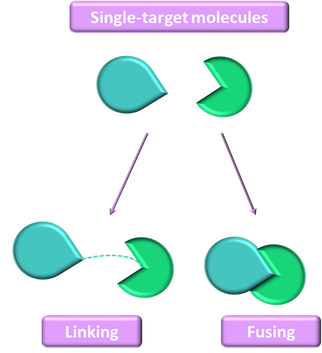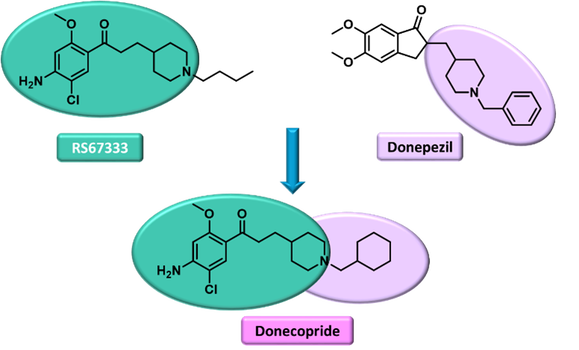All for one and one for all; The story about multi-target directed ligands
|
What are the “multi-target directed ligands” (MTDLs)? That is the question that we always get when we start the story about them. For answering it we need to go from the beginning and explain first the basic terms in the world of medicinal chemistry. Active molecules are interacting in a specific way with their targets, and the part of the molecular structure that is in charge for establishing the interaction and having the activity is called the pharmacophore. The majority of known drugs are single-target ones, meaning their pharmacophore is specific for only one target. However, from the aspect of neurodegenerative diseases, single-target molecules have not been that effective (the drug does not reach the target in vivo; the drug-target interaction is not sufficient in order to reduce the signs and symptoms of the disease, etc.) (Wenzel et al. 2018).
On the other side, the MTDLs have been obtained by combining (at least two) different pharmacophores into one molecule (Figure 6). These different pharmacophores are either overlapping each other, or are being separate by a linker, in one molecule. They are also known as multi-modal therapies, fragment-based pharmacology, poly-pharmacology, multi-target designed drugs, and hybrid compounds (Wenzel et al. 2018). These molecules could represent a promising strategy in the combat against neurodegenerative disorders (ND), since they represent multi-factorial diseases. For example in Alzheimer’s disease besides production of the toxic amyloid-β peptide, the cholinergic neurotransmision is also altered (Forner et al. 2017; Congdon et al. 2018; Weller et al. 2018). One of the MTDLs with promising results in the preclinical stage of research is the donecopride (Lecoutey et al. 2014; Rochais et al. 2020), molecule that is targeting both serotonin subtype 4 receptor (as RS67333) and acetylcholinesterase (as donepezil) (Figure 7).
MTDLs may also provide a more effective treatment, than the combinations of the single-target drugs, can have less complexed dosing and better patient compliance (Wenzel et al. 2018). Nevertheless, development of these types of molecules represents quite a challenge. Still when we take in consideration their benefits, and the fact that the single-target approach seems to fail when it comes to the ND, maybe now is the time for the medicinal chemist to turn their work towards the development of the MTDLs?
In the EuroNeurotrophin project one of our objectives was to develop the first multi-target ligands which target will be, beside the TrkB receptor, also a serotonin 5-HT4 receptor. By targeting these two receptors we will be able to prevent the death of neurons and also induce the regeneration of already damaged ones, which could lead to development of the future therapies for the ND. |
Mirjana is hosted at the Université de Caen Normandie, France and the aim of her research is the in silico screening of UNICAEN chemical library in order to identify hit molecules as ligands for neurotrophin receptors. Additionally, these studies have been expanded by the physicochemical optimization of the selected hit compounds. The final lead compounds will be fluorescently labeled for in vivo bioimaging studies.
|




